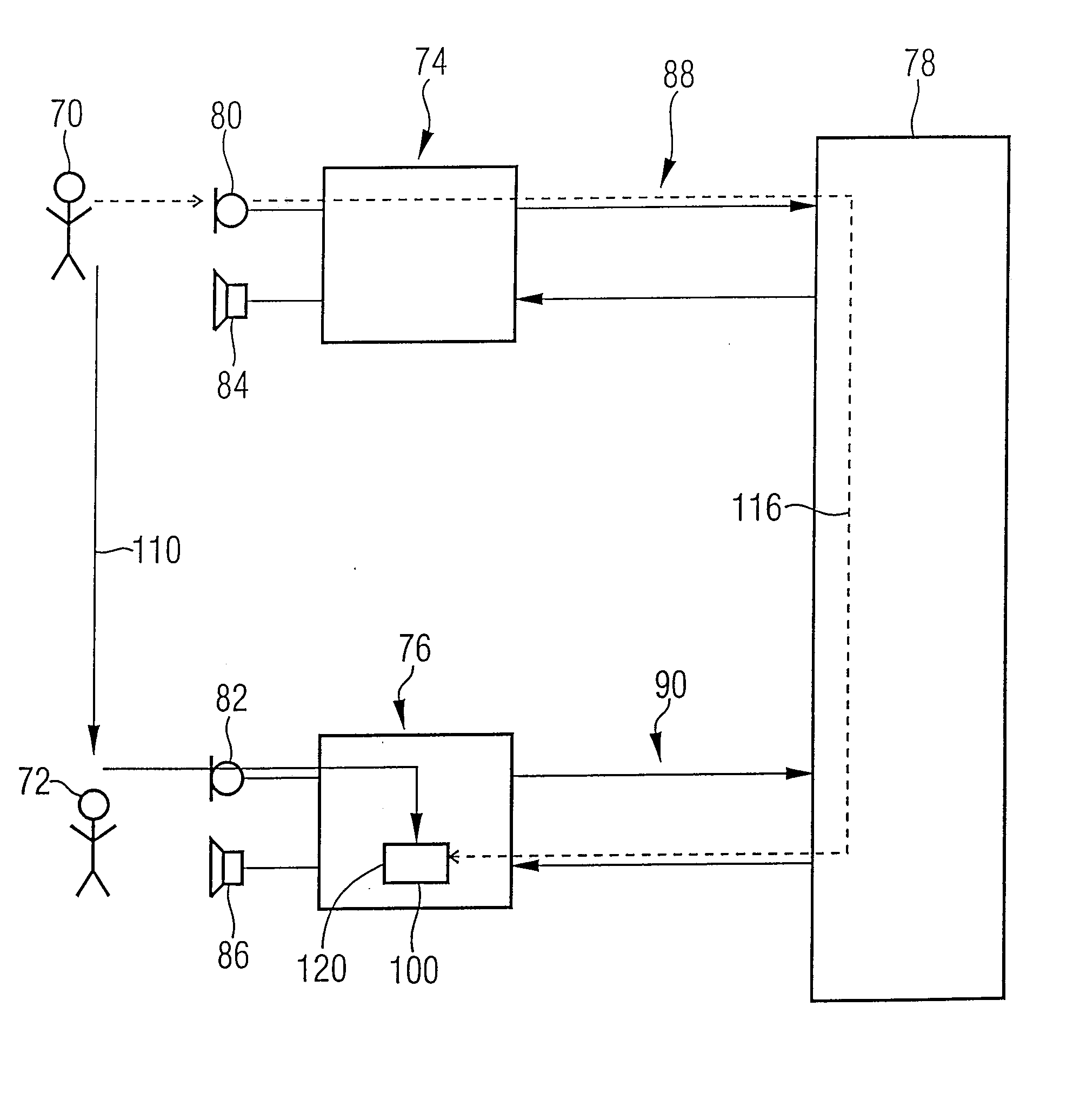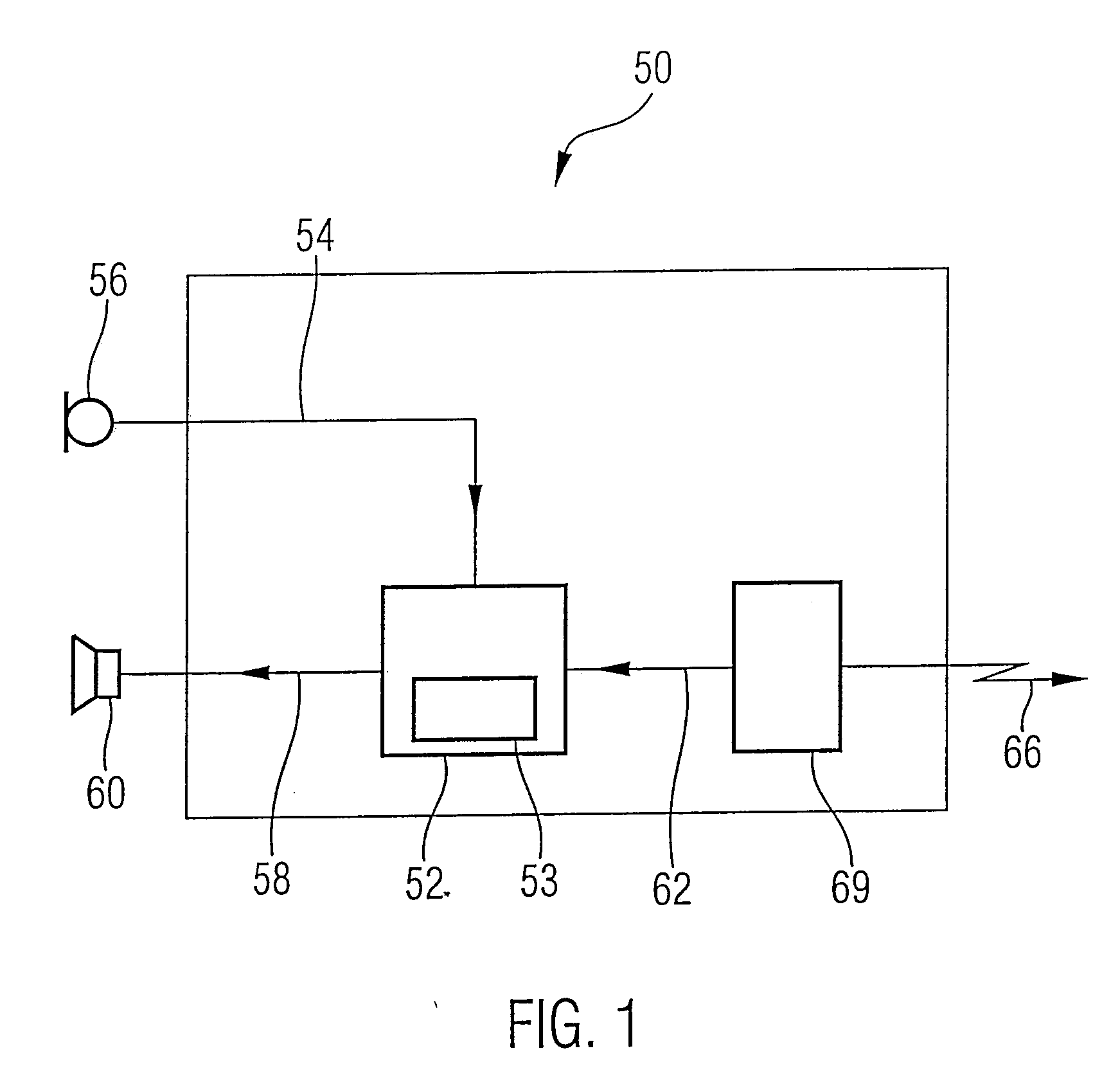Conference terminal with echo reduction for a voice conference system
a conference system and conference terminal technology, applied in the field of conference terminals with echo reduction, can solve the problems of no uniform conference signal in these systems, inability to communicate directly with a group of people, and limited radio resources for a radio-based voice conference system, so as to achieve no noise suppression
- Summary
- Abstract
- Description
- Claims
- Application Information
AI Technical Summary
Benefits of technology
Problems solved by technology
Method used
Image
Examples
Embodiment Construction
[0046]FIG. 1 shows a block diagram of an inventive conference terminal according to an embodiment of the present invention. The conference terminal is designated by 50 in its entirety. Core of the conference terminal 50 is a means 52 for echo suppression, which comprises a means 53 for noise suppression. The means 52 for echo suppression receives a microphone signal 54 from a first sound transducer means 56 and provides a loudspeaker signal 58 to a second sound transducer means 60. Further, a composite conference signal 62 is supplied to the means 52 for echo suppression, which a connecting means 64 receives from a central unit. The transmission path between the central unit and the connecting means 64 is here designated by 66.
[0047] The first sound transducer means 56, which is preferably implemented as microphone, generates a microphone signal 54 from an incident acoustic signal. The second sound transducer means 60, which is preferably implemented as loudspeaker, generates an ac...
PUM
 Login to View More
Login to View More Abstract
Description
Claims
Application Information
 Login to View More
Login to View More - R&D
- Intellectual Property
- Life Sciences
- Materials
- Tech Scout
- Unparalleled Data Quality
- Higher Quality Content
- 60% Fewer Hallucinations
Browse by: Latest US Patents, China's latest patents, Technical Efficacy Thesaurus, Application Domain, Technology Topic, Popular Technical Reports.
© 2025 PatSnap. All rights reserved.Legal|Privacy policy|Modern Slavery Act Transparency Statement|Sitemap|About US| Contact US: help@patsnap.com



